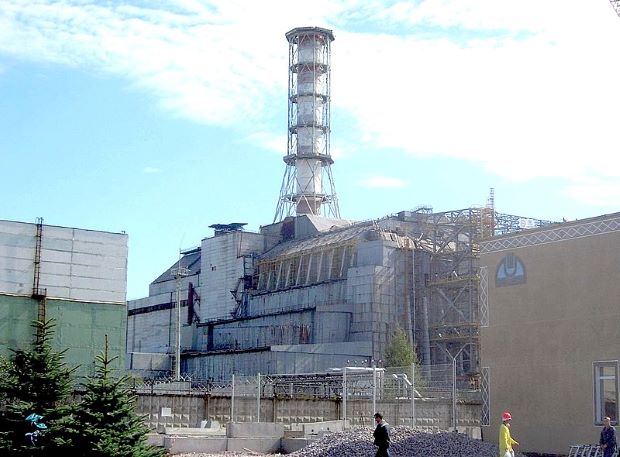April 26 in History
1986 – The Chernobyl disaster occurs in the Ukrainian Soviet Socialist Republic
Called the world’s worst-ever civil nuclear incident, the Chernobyl nuclear disaster occurred on this day in 1986 at the No. 4 reactor in the Chernobyl Nuclear Power Plant, near the city of Pripyat in the north of the Ukrainian SSR in the Soviet Union. The explosion and fire released large amounts of radioactive material into the atmosphere, causing a devastating environmental catastrophe.
One of only two nuclear energy accidents rated at seven—the maximum severity—on the International Nuclear Event Scale, the other being the 2011 Fukushima nuclear disaster in Japan, the initial emergency response, together with later decontamination of the environment, involved more than 500,000 personnel and cost an estimated 18 billion roubles—roughly US $68 billion in 2019, adjusted for inflation.
The accident occurred during a safety test meant to measure the ability of the steam turbine to power the emergency feedwater pumps of an RBMK-type nuclear reactor in the event of a simultaneous loss of external power and major coolant leak. The meltdown and explosions ruptured the reactor core and destroyed the reactor building. This immediately followed by an open-air reactor core fire which lasted until May 4, 1986, during which airborne radioactive contaminants were released and deposited onto other parts of the USSR and Europe. Approximately 70% landed in Byelorussia (now Belarus), 16 kilometres (9.9 mi) away. The fire released about the same amount of radioactive material as the initial explosion. In response to the initial accident, a 10-kilometre (6.2 mi) radius exclusion zone was created 36 hours after the accident, from which approximately 49,000 people were evacuated, primarily from Pripyat. The exclusion zone was later increased to a radius of 30 kilometres (19 mi), from which an additional ~68,000 people were evacuated.
Following the reactor explosion, which killed two engineers and severely burned two more, a secret emergency operation to put out the fire, stabilize the reactor, and clean up the ejected radioactive material began. During the immediate emergency response, 237 workers were hospitalized, of which 134 exhibited symptoms of acute radiation syndrome (ARS). Among those hospitalized, 28 died within the following three months, all of whom were hospitalized for ARS.
Chernobyl’s health effects to the general population are uncertain. An excess of 15 childhood thyroid cancer deaths were documented as of 2011. A United Nations committee found that to date fewer than 100 deaths have resulted from the fallout.
Following the disaster, Pripyat was abandoned and eventually replaced by the new purpose-built city of Slavutych. The Chernobyl Nuclear Power Plant sarcophagus was built by December 1986. It reduced the spread of radioactive contamination from the wreckage and protected it from weathering. The confinement shelter also provided radiological protection for the crews of the undamaged reactors at the site, which were restarted in late 1986 and 1987.
-Wikipedia
Photo Caption – No. 4 reactor site in 2006 showing the sarcophagus containment structure; Reactor No. 3 is to the left of the stack – Flickr



Comments are closed, but trackbacks and pingbacks are open.